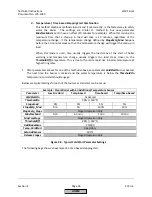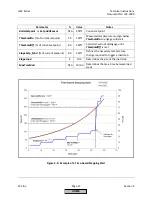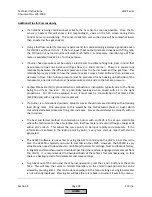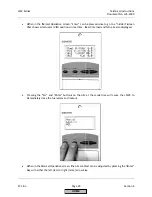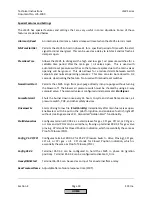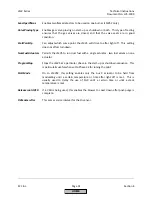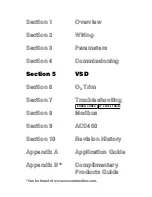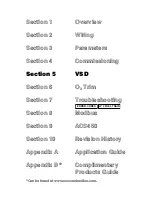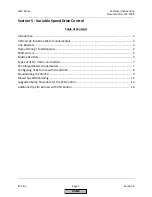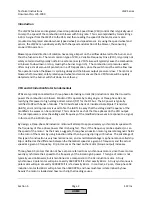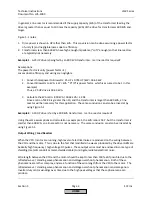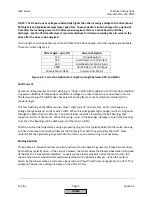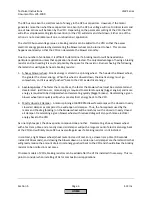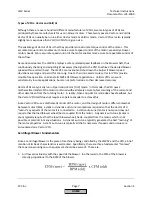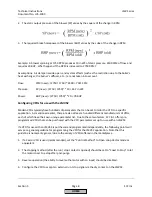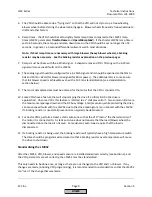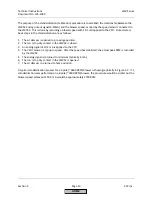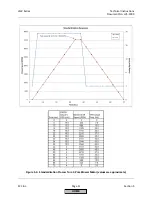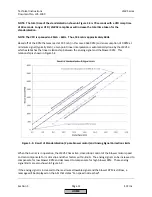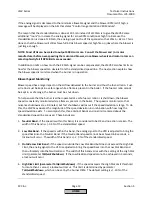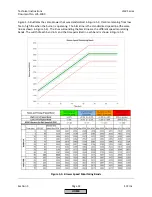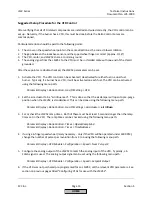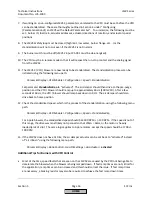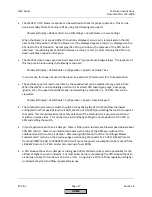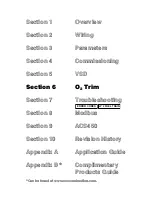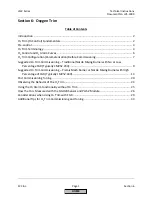
Technical
Instructions
LMV
Series
Document
No.
LV5
‐
1000
Section
5
Page
6
SCC
Inc.
The
DC
bus
can
absorb
a
small
amount
of
energy
in
the
DC
bus
capacitors.
However,
if
the
motor
generates
more
than
what
these
capacitors
can
absorb,
the
DC
bus
voltage
will
rise
to
critical
levels
and
one
of
two
actions
will
be
taken
by
the
VFD.
Depending
on
the
parameter
setting
of
the
VFD,
the
VFD
will
either
stop
decelerating
(stall
prevention)
or
the
VFD
will
alarm
and
shut
down.
Either
one
of
the
actions
is
not
a
desirable
result
on
a
combustion
air
application.
To
avoid
DC
bus
overvoltage
issues,
a
braking
resistor
can
be
added
to
the
VFD
so
that
the
excess
electrical
energy
generated
by
decelerating
the
blower
wheel
can
be
turned
to
heat.
This
process
happens
seamlessly
so
that
the
VFD
can
decelerate
the
blower
smoothly.
Due
to
a
number
of
variables,
it
is
difficult
to
determine
if
a
braking
resistor
will
be
needed
on
a
particular
application
unless
that
application
has
been
tested.
The
only
disadvantage
of
having
a
braking
resistor
and
not
needing
it
is
cost
and
possibly
the
space
for
the
resistor.
Burners
having
the
following
characteristics
will
typically
need
a
braking
resistor:
1.
A
heavy
blower
wheel
‐
Kinetic
energy
is
stored
in
a
spinning
wheel.
The
heavier
the
blower
wheel,
the
greater
the
stored
energy.
When
this
wheel
is
slowed
down,
the
kinetic
energy
must
go
somewhere,
and
it
is
usually
"pushed"
back
to
the
VFD
as
electrical
energy.
2.
Fast
ramp
times
‐
The
faster
the
ramp
times,
the
faster
the
blower
wheel
must
be
accelerated
and
decelerated.
Just
like
a
car,
more
energy
is
required
to
accelerate
quickly
(bigger
engine)
and
more
energy
is
required
to
be
dissipated
when
decelerating
quickly
(bigger
brakes).
Decelerating
a
given
blower
wheel
more
quickly
will
push
more
electrical
energy
back
to
the
VFD.
3.
Mostly
closed
air
damper
‐
A
motor
spinning
at
3600
RPM
draws
fewer
amps
with
a
closed
or
nearly
closed
air
damper
as
compared
to
a
wide
open
air
damper.
Thus,
the
horsepower
used
by
the
motor
and
the
drag
(braking)
on
the
blower
wheel
will
be
much
less
with
a
closed
or
nearly
closed
air
damper.
Decelerating
a
given
blower
wheel
with
reduced
drag
will
also
push
more
electrical
energy
back
to
the
VFD.
As
one
might
expect,
the
above
points
compound
one
another.
Decelerating
a
heavy
blower
wheel
with
a
fast
ramp
time
and
a
mostly
closed
air
damper
will
push
a
large
amount
of
electrical
energy
back
at
the
VFD
and
will
likely
cause
DC
bus
overvoltage
issues
if
a
braking
resistor
is
not
installed.
In
contrast,
a
light
blower
wheel
(sheet
metal
instead
of
cast
iron),
a
slower
ramp
time
(90
seconds
instead
of
30
seconds),
and
slowing
the
blower
down
on
a
more
open
air
damper
are
characteristics
that
will
greatly
reduce
the
amount
of
electrical
energy
pushed
back
to
the
VFD
and
should
allow
the
braking
resistor
to
be
omitted
in
most
cases.
On
some
models
of
VFDs,
braking
resistors
can
be
added
after
the
VFD
is
installed
if
necessary.
This
is
a
point
to
consider
when
installing
VFDs
for
combustion
air
applications.
HOME
Summary of Contents for LMV 5 Series
Page 2: ...Intentionally Left Blank ...
Page 41: ...LMV Series Technical Instructions Document No LV5 1000 SCC Inc Page 7 Section 2 HOME ...
Page 42: ...Technical Instructions LMV Series Document No LV5 1000 Section 2 Page 8 SCC Inc HOME ...
Page 43: ...LMV Series Technical Instructions Document No LV5 1000 SCC Inc Page 9 Section 2 HOME ...
Page 44: ...Technical Instructions LMV Series Document No LV5 1000 Section 2 Page 10 SCC Inc HOME ...
Page 45: ...LMV Series Technical Instructions Document No LV5 1000 SCC Inc Page 11 Section 2 HOME ...
Page 46: ...Technical Instructions LMV Series Document No LV5 1000 Section 2 Page 12 SCC Inc HOME ...
Page 47: ...LMV Series Technical Instructions Document No LV5 1000 SCC Inc Page 13 Section 2 HOME ...
Page 48: ...Technical Instructions LMV Series Document No LV5 1000 Section 2 Page 14 SCC Inc HOME ...
Page 49: ...LMV Series Technical Instructions Document No LV5 1000 SCC Inc Page 15 Section 2 HOME ...
Page 50: ...Technical Instructions LMV Series Document No LV5 1000 Section 2 Page 16 SCC Inc HOME ...
Page 51: ...LMV Series Technical Instructions Document No LV5 1000 SCC Inc Page 17 Section 2 HOME ...
Page 52: ...Technical Instructions LMV Series Document No LV5 1000 Section 2 Page 18 SCC Inc HOME ...
Page 53: ...LMV Series Technical Instructions Document No LV5 1000 SCC Inc Page 19 Section 2 HOME ...
Page 54: ...Technical Instructions LMV Series Document No LV5 1000 Section 2 Page 20 SCC Inc HOME ...
Page 55: ...LMV Series Technical Instructions Document No LV5 1000 SCC Inc Page 21 Section 2 HOME ...
Page 373: ...Intentionally Left Blank ...

